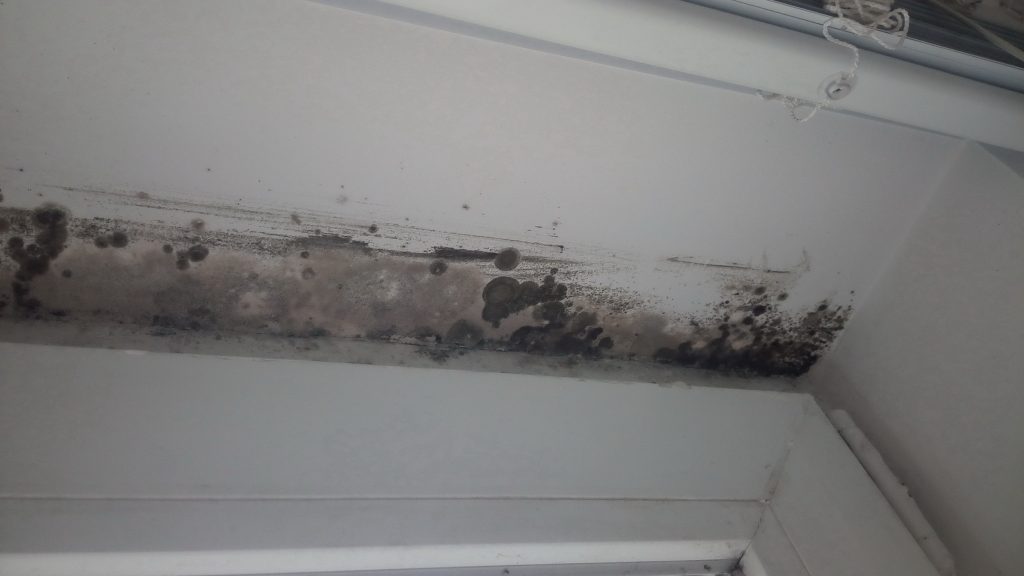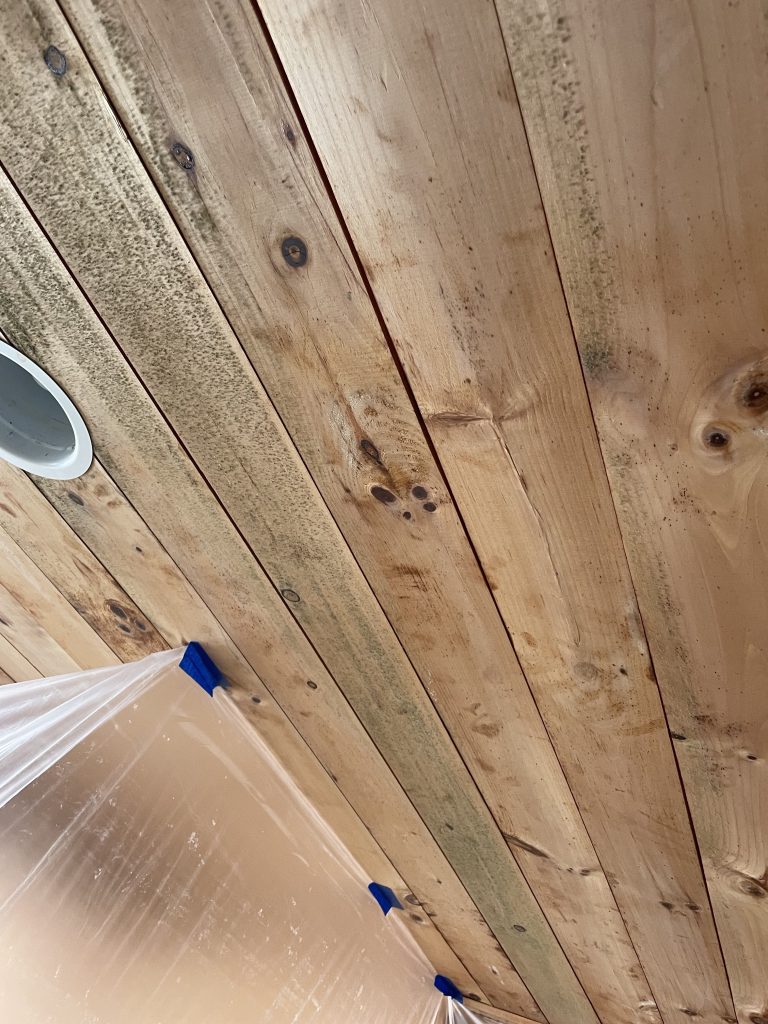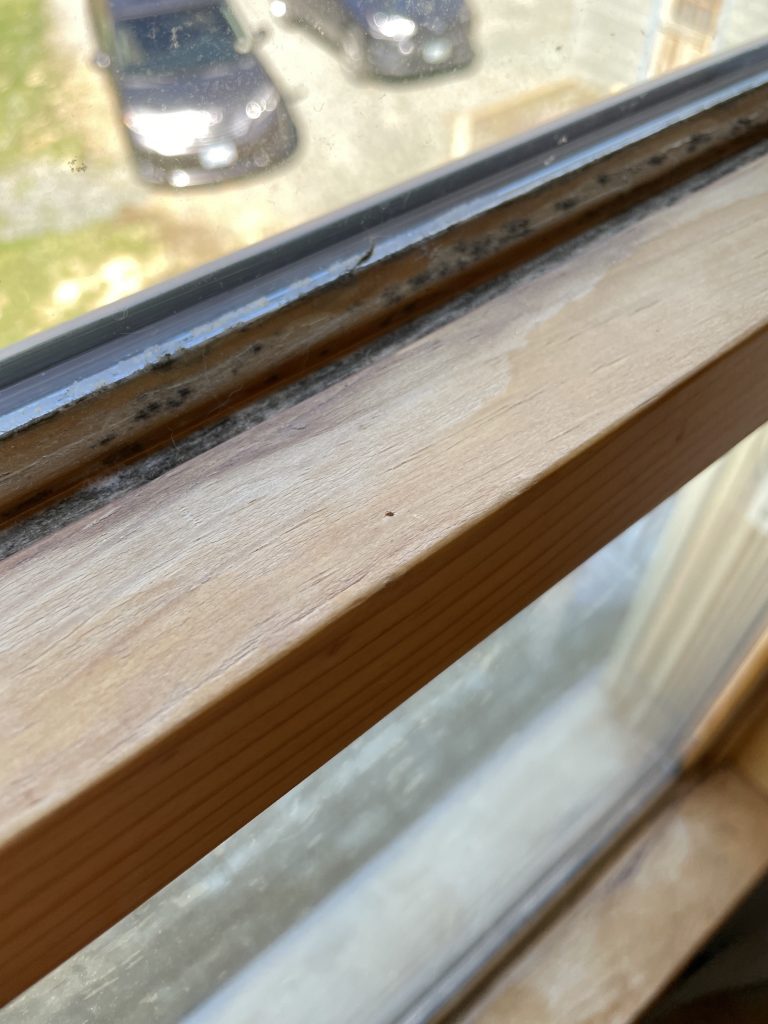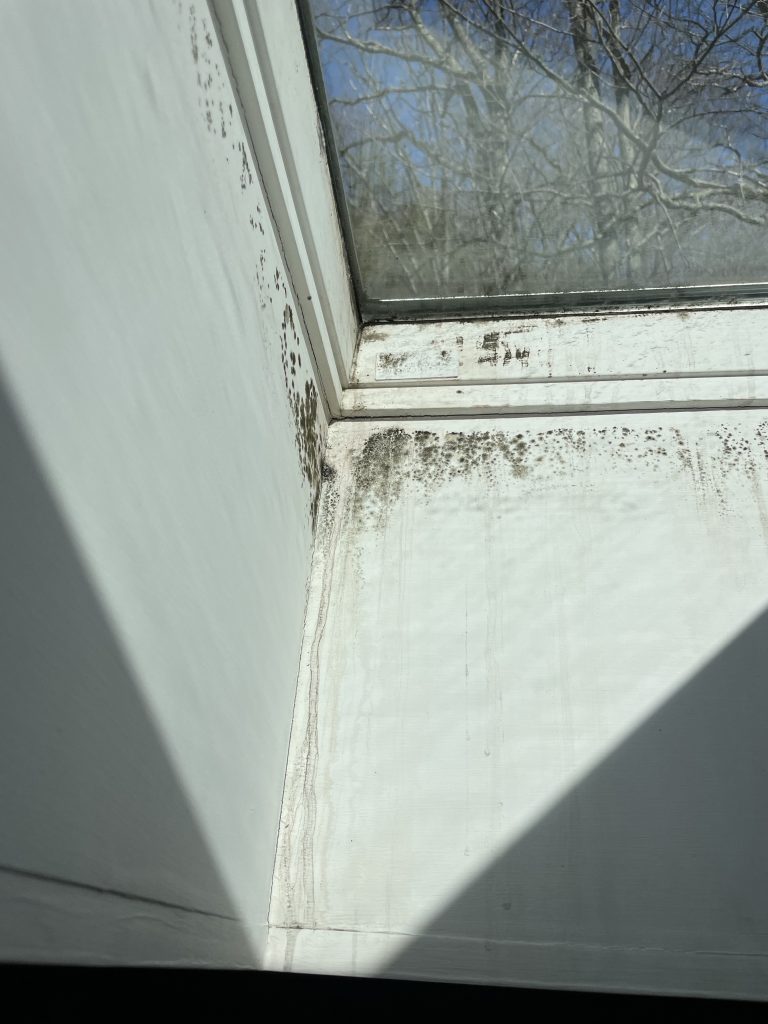
Mold can grow on organic surfaces and it can be airborne. There is always some degree of airborne mold and it can enter your home through open windows and doors, any gaps, and even on your clothes. You may see mildew in your bathroom that can be easily cleaned by typical housecleaning methods. This is a normal amount of mold.
Mold grows and spreads when it has a moisture source and an organic material to feed on. When the right combination of moisture and organic materials meet, aka food source, mold growth can take off and spread.
Food sources inside your home are abundant–drywall, wood, cotton, wool, dust and dander, soil if you have house plants, and food. Once mold starts growing and the moisture and food source is maintained, it can be more difficult to remove. Mold growing on surfaces, if actively growing, can release mold spores into the air and now you have a compounded problem of surface mold and airborne mold. To clean up the mold problem, you now must remove the impacted materials (say, wood trim or drywall), determine the moisture source, and address the airborne mold. Proper removal requires the right equipment and is not something we recommend the average homeowner taking on.
Common Places to Find Mold
Mold can grow just about anywhere given the ideal conditions, some common areas examples include:




Mold can cause a multitude of problems in your home when spores travel through the air or are transported and land in a wet or moist area. Once spores are fed with oxygen, water, and an organic food source they can produce allergens, irritants, and sometimes, potentially toxic substances and inhaling or coming into contact with mold can cause an allergic reaction. It can irritate your eyes, skin, nose, mouth, and throat and can trigger asthma attacks in people with asthma who are also allergic to mold. Research on the health impacts of mold exposure are ongoing.
In addition to potentially causing health problems, mold slowly destroys the item it is growing on. So, if mold is growing on your window sills, they are slowly being deteriorated and if not cleaned in a timely manner, it can lead to costly repairs in your home.
The longer mold is allowed to grow, the bigger the problem it causes so it’s best to get the problem under control as quickly as possible. Not only should you clean up the mold, but the moisture must be addressed or the mold is likely to return.
Mold can be visible to the naked eye, and the most common form is “black mold”. This mold grows under the right circumstances and is usually an indicator of a significant moisture problem often accompanied by a musty odor, but not always. The best way to determine if you have a mold problem is to have an indoor air quality assessment or mold inspection done.
This includes the following:
Indoor air samples are compared to outdoor air samples and, in an ideal world, mold spores found outside should match the mold spores found inside. However there are often times different or elevated numbers mold spores found indoors that are not found outdoors, these are likely indicators of a moisture source within the house.
Concerned you may have a mold problem in your home or office?
The first step is to have the conditions assessed by a mold inspector. A thorough inspection will determine whether or not you have a mold problem.